








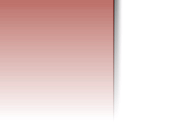
|
The University of Wisconsin
Program in Virology
Pre- and post-doctoral
opportunities in Virology
Description of the program:
The Program in Virology at the University of Wisconsin-Madison is an
interdepartmental program composed of faculty from 15 different
departments. Areas of research include the molecular biology and
genetics of viral transcription and replication, virus structure and
function, viral pathogenesis and oncogenesis, host response to virus
infections, and antiviral therapy. A Ph.D.degree is offered. It is
designed to provide broad training in procaryotic and eucaryotic
molecular biology with an emphasis on the use of viruses in defining
basic concepts in biology and the understanding of their role in
disease.Post-doctoral opportunites exist in most of the laboratories.
All applicants accepted into the Program receive competitive financial
support.
Faculty
Paul Ahlquist
RNA-dependent replication and transcription of bromoviruses; RNA
virus recombination and host specificity.
Curtis Brandt
Genetics of herpes simplex virus virulence in ocular disease;
viral immunology and antiviral therapy.
Benjamin Brooks
Neurotropic virus infections of blood-brain barrier cells;
molecular determinants of agerelated retrovirus and lentivrus
restriction in the central nervous system.
Steve Clark
Oncogenic transformation of hematopoietic cells by
retroviruses.
Theresa Compton Molecular mechanisms of
human cytomegalovirus host cell recognition/attachment and virus
entry.
Elliot Dick Mechanisms of controlling transmission
of rhinoviruses and other respiratory viruses.
William Ershler
Influenza virus biology and vaccine development; viral induced
immuno- senescence.
John Fleming Immunopathogenesis of
viral- induced demyelination by coronaviruses.
Paul Friesen
Control of baculovirus replication; baculovirus expression
vectors; invertebrate retrotransposons.
Thomas German
Structure and function of tomato spotted wilt virus; genetically
engineered resistance to plant virus infection.
Robert Goodman
Plant defense responses to infection by tobacco mosiac virus
and geminiviruses.
Stefan Gravenstein Immune recognition
of influenza viruses; epidemiology of influenza.
Virginia
Hinshaw Molecular basis of influenza virus pathogenesis; immune
recognition of influenza viruses.
Paul Lambert Molecular
genetics of papillomaviruses; the role of papillomaviruses in human
cancer.
Geoffrey Letchworth Herpesvirus penetration, local
immunity and vaccine development; rhabdovirus
persistence.
Daniel Loeb Replication of hepatitis B virus;
reverse transcription of LINE 1 elements.
Mirek Malkovsky
Molecular mechanisms of immunological and non-immunological
resistance to primate immuno-deficiency viruses.
Douglas
Maxwell Molecular characterization of single stranded DNA plant
viruses.
Janet Mertz Control of viral transcription, RNA
processing and translation in mammalian cells; SV40 T antigen
function.
Max Nibert Reovirus structure and disassembly,
early steps in infection, pathogenesis.
Christopher Olsen
Ann Palmenberg
Molecular biology of picornaviruses; viral translation,
proteolytic processing replication, and evolution.
Antonito
Panganiban Molecular biology of HIV and SIV replication and
pathogenesis .
C. David Pauza Pathogenesis of primate
retroviruses; host and virus gene control of infection; mucosal
immunity to retroviruses.
Roland Rueckert Neutralization
by antibodies; structure and assembly of picornaviruses and
nodaviruses; mechanism of drug resistance in common cold
viruses.
Maria Salvato Mechanisms of viral persistence and
immunosuppression; molecular biology of arenaviruses.
Kevin
Schultz Primate retrovirus infection; molecular biology and
pathogenesis of arboviruses.
Ronald Schultz Viral
pathogenesis; immune response and viral immunoprophylaxis.
Paul
Sondel Lymphocyte interactions with virally transformed and
malignant human cells.
Bill Sugden Mechanisms by which
herpesviruses immortalize cells; herpesviral latency and re-
activation.
Waclaw Szybalski Transcriptional controls and
regulatory circuits in bacteriophage lambda.
Russell Tomar
Effect of retroviruses on host- immune response; viral
pathogenicity.
Thomas Yuill Virology and epidemiology of
arthropod-borne viruses; alphaviruses and bunyaviruses.
The Madison campus:
The University of Wisconsin-Madison, established in 1849, is
recognized as one of the leading institutions of undergraduate and
graduate education in this country. Located along the shores of Lake
Mendotain Madison, the capital of Wisconsin, theUniversity, with its
enrollment of 40,000students of which 11,000 are graduate students, is
a center of cultural activities in this city of 200,000. The
University, home of the 1993 Rose Bowl champions, boasts excellent
indoor and outdoor recreational facilities available to all members of
the academic community. In addition, the natural beauty of Madison,
including its five lakes, the university arboreteum, and many parks,
invite year-round activity.
Application information:
Applicants to graduate study should haveadequate training in chemistry
and in the biological sciences. All applicants are expected to take the
Graduate Record Examination including an advanced test in chemistry or
biology. Applicants should be submitted by January 15. The Ph.D.
Degree in the Program in Virology is administered through the
University of Wisconsin Cellular and Molecular Biology
Program.Postdoctoral applicants may apply to the program as a whole or
are invited to write directly to individual faculty working in theareas
of interest to the applicant.
Financial assistance/housing:
Participants in the Program in Virology are supported by research
assistantships or research associateships which are available to both
foreign and domestic applicants.In addition, predoctoral and
postdoctoral traneeships are available to a limited number of program
participants each year.These traineeships are available only tocitizens
or permanent residents of theUnited States. While most students and
postdocs live off-campus in the various neighborhoods of Madison, there
is limited, low-cost housing available on campus. A non-campus
assistance center provides easy access to housing listings.
Requests for further information should be
directed to:
The Program in Virology Cell and Molecular Biology
Office Robert Bock Laboratory, rm 413 University of
Wisconsin-Madison 1525 Linden Drive Madison, Wisconsin 53706
tel.608-262-3203/ fax. 608-262-4570
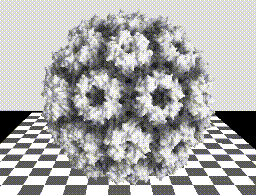
CCMV (Data provided by Purdue)
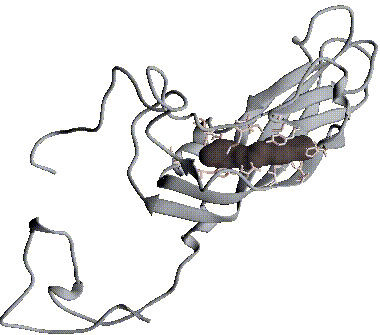
rhinovirus 14 VP1 /drug (WIN52035) interaction
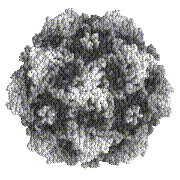
CPV (Data provided by Purdue)
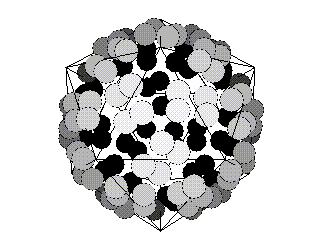
Illustration of AMV showing assymetry of T3 structure
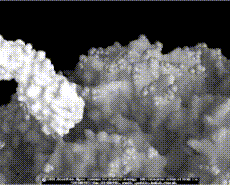
receptor / rhinovirus 14 interaction
Computer images are courtesy of Jean-Yves Sgro,
Molecular Virology Institute,
University of Wisconsin.
 |

